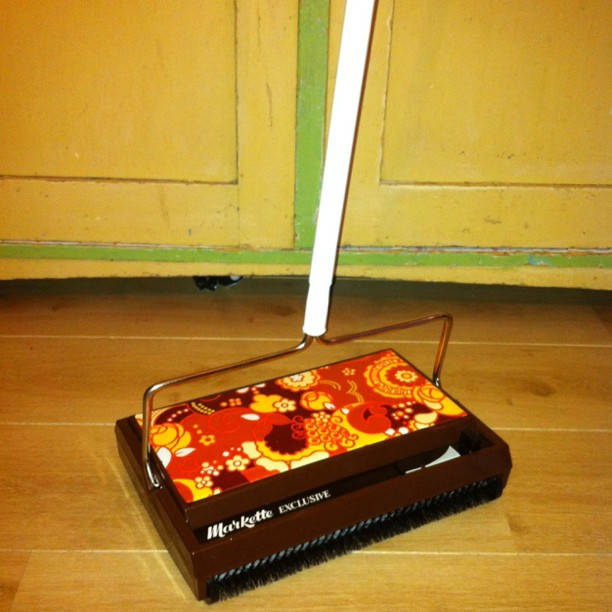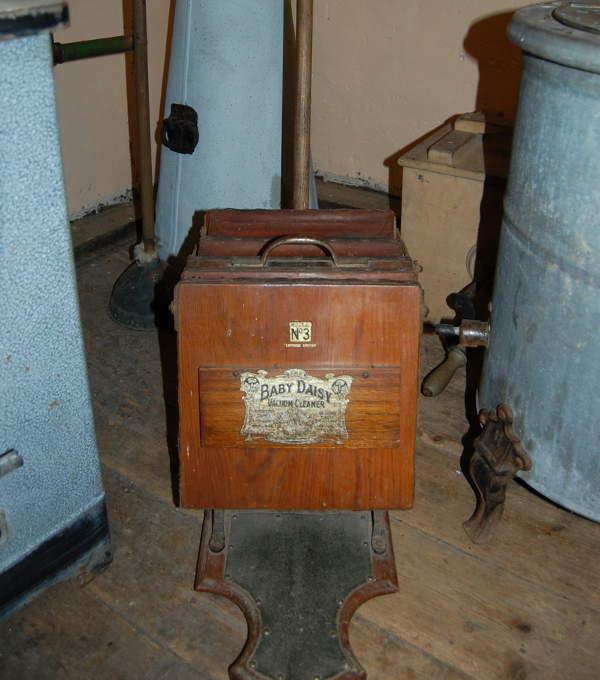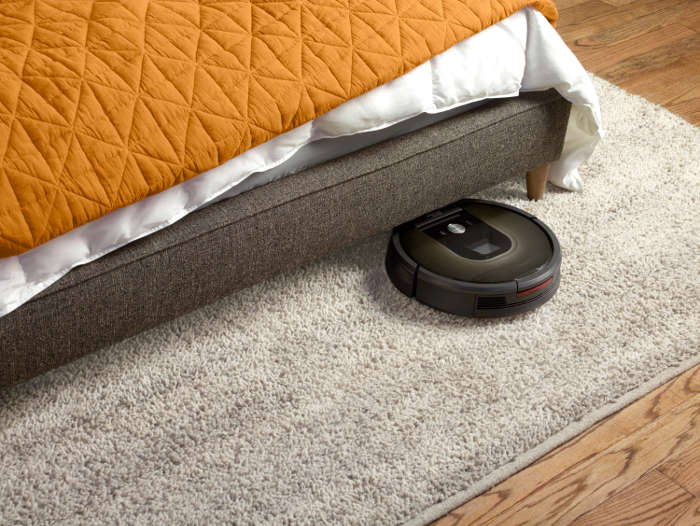
Established in 2016
From Carpet Sweepers To Electric Cars - A Brief History Of Vacuum Cleaners
Electric cars? What are you talking about?!
You may be surprised how much research and innovation goes into the production of vacuum cleaners. In fact, one of the most well-known and reputable vacuum cleaner manufacturers, Dyson, has just announced that they are setting out to produce an electric car (source: CNN). How can they do it? Aren't vacuum cleaners simple devices that have nothing to do with cars? If you think so, you could not be more wrong.
Research and development resources
First of all, you should know that over 1,000 engineering staff currently works for Dyson company. 400 of them have been 'secretly' working for 2.5 years on the 'electric car' project. Quite enough manpower to get the project going if you ask me. The company has both financial resources (2016 revenue was at £2.53 bln and profit at £473 mln), and an ambitious, experienced Founder CEO (Sir James Dyson), who can see the project through.
Battery Technology
Most importantly, however, the biggest strength of Dyson comes from the biggest obstacle in producing a popular, mass-market electric car: battery technology. According to The BBC, the batteries can be the "biggest threat" to electric cars. Dyson already needs reliable and powerful batteries for their line of cordless vacuum cleaners.
What should you make hopeful about the battery they are supposedly going to use in their electric car? Currently, most of the hybrid electric vehicles and all-electric vehicles use lithium-ion batteries (relatively similar to the ones in your iPhone) (source: U.S. Department Of Energy). Dyson plans to use solid-state batteries, which can offer a significant improvement in performance. Another major company working on this technology is a Japanese car maker Toyota (source: Wired UK).
Motor technology
Lastly, another thing that vacuum cleaners and cars have in common are motors. The more efficient the motor is, the less energy it requires for the useful power output (to do the same job). Less energy required for the motor in a cordless vacuum cleaner to run means that we get the more useful output of the same battery size. In electric cars, improved motor efficiency could translate into better ranges (how long can you drive on a single battery charge). In their newest line of vacuums, Dyson uses a motor which took them 8 years to develop. You can read more about it here.
If you are still not convinced that vacuum cleaner manufacturers are serious players in the innovation field, take a look at this short video talking about the motor technology implemented in Dyson's cordless vacuum cleaners:
I hope I caught your attention with this introduction. We won't be talking any more about electric cars here (sorry if you are disappointed). My goal was to only show you that there is more to vacuum cleaner technology & innovation than most of the people realize. Interested? Let's explore the history of vacuum cleaners.
1860: Carpet Sweepers
The history of vacuum cleaners begins with carpet sweepers. These mechanical devices were first patented over 150 years ago (in 1860) by Daniel Hess from Iowa. The first carpet sweeper to be available for sale (there is no record of Hess's invention being ever produced, let alone sold) was invented 16 years later by Melville Bissell from Michigan. (see the patent here). Some people still use manual carpet sweepers event today, valuing how quiet these devices are.
There is no need to plug the carpet sweeper to power - you just move it along the carpet or the floor. The movement turns rollers with brushes inside the sweeper. Dirt and dust are swept from the floor into a container. Although the technology is pretty old, some of the modern vacuum cleaners take advantage of it. A noteworthy example is a line of cordless vacuums from Dyson (mentioned before) - it is used in their Direct-Drive cleaner heads.

1890: Manual Vacuum Cleaners
Before the electricity at homes became something common, people successfully tried to create devices, which can be operated manually. Manual vacuum cleaners were another example of human ingenuity. In the late 19th century many such devices were conceived, some of the more notable being 'The Baby Daisy' and 'The Burger Vacuum Cleaner'.
Manual vacuum cleaners enforced real teamwork - most of them required two people to operate them. One person was to do the vacuuming in a similar fashion we do it in 2017 - move the cleaner head along the floor. The other person's job was to create the suction. There were various ways to achieve it, such as using bellows or a fan driven by wheels.
In the United States, the manual vacuum cleaners were at the peak of their popularity in 1914. That year there were 18 different manufacturers offering such devices for sale. Just 2 years later that number was more than halved to 8 manufacturers (source).

1907: The first portable electric vacuum cleaner
The first electric vacuum cleaner portable enough to be used at home and by one person was invented in 1907 by a department store janitor from Ohio named James M. Spangler (source). He patented his invention in 1908, calling it 'Electric Suction Sweeper'. It was the first device to use both cleaning attachments and a cloth bag collecting dust (source).
Due to the lack of funding necessary to manufacture the device, Spangler sold his invention to William H. Hoover the same year he patented it. Hoover subsequently redesigned the device adding a steel case to it. The first model - Model O - appeared on the market still in 1908.
If the name 'Hoover' sounds familiar to you, you're on a good track. W. H. Hoover was indeed the founder of 'The Hoover Company', which become such wildly popular, that in some parts of the world such as the United Kingdom and Ireland vacuum cleaners are called hoovers to this day.

1945 - 1995: Post World War Two
General economic growth and gradually wider access to electricity in the post World War Two era made the vacuum cleaner a staple of middle-class households. A vacuum cleaner was no longer considered a luxury, but something commonplace.
While it is not so easily noticeable to by an average person, the vacuum cleaner invention streak continued in that time period. Most important inventions include a filter-less cyclonic dirt separation (used in bag-less vacuum cleaners), central vacuum systems (vacuum cleaners 'in the wall') and cordless vacuum cleaners with rechargeable batteries.

1996 - present day: robotic vacuum cleaners
In 1996 the most promising vacuum cleaner innovation was presented to a wider audience: a fully autonomous vacuum cleaner (we wrote about it our recent article on new technologies that can revolutionize the cleaning industry). Why the most promising? Because for the first time in the history of vacuum cleaners, this device was intended not to assist a human being in dusting the carpet or a floor, but completely free him or her from that chore.
The first commercially available device of this type - Electrolux Trilobite - was introduced in 2001. Its performance was quite modest by 2017 standards (e.g. it always left a 1 inch gap around the wall, which had to be cleaned manually, and kept bumping into sharp objects), but it was still a big leap forward.
Over the years, thanks to improvements in machine learning, the algorithms implemented in the autonomous vacuum cleaners became much smarter. These devices keep growing in popularity, reaching 20% market share in the $200+ vacuum cleaner category in 2016.
According to a research report by Beige Market Intelligence, the robotic vacuum cleaner market is expected to grow by 11% yearly until 2021 (11% CAGR). Not surprising, virtually everyone would rather have their vacuum cleaner do the job by itself :)

The Future
What's are the main concerns about robotic vacuum cleaners currently available on the market? One big disadvantage of such devices is that they are not able to climb vertical surfaces such as stair steps. If you live in a house with multiple levels, you still have to do some vacuum cleaning work, even if you have an autonomous vacuum cleaner. Your vacuum cleaner will just stop at the edge of the stairway and either wait for you (just like a young, scared dog) or go back to the charging station (again, it reminds me of a young scared dog running back to its place when it sees stairs).
Another problem with robotic vacuum cleaners is the battery (mentioned before). Manufactures of such devices always have to make a tradeoff between the size and weight of the device, and the time it can run on a single charge. A large battery also takes up precious space, which could be used for example for a higher volume dust bin (which would require you to empty it less often).
Luckily, some people are already working to solve this (and probably many more) problems. An example of a company innovating in this area is Casabella. At International Housewares Show 2013 in Chicago, they presented a concept robot vacuum cleaner able to climb stairs powered by the organic matter it finds it dust. You can read more about this idea here (including design prototype pictures).
Grete Kuusk
Acknowledgements:
- "Featured photo": Own work based on the photos of Rosebud23r, Geoff Paters and iRobot
- Photo no. 1": Brand new vintage C. A. Breger floor and carpet sweeper by Thomas Ricker. For source click here
- Photo no. 2": Baby Daisy - Edwardian Vacuum Cleaner by Rosebud23r. For source click here
- Photo no. 3": Early electric vacuum cleaner by Electric Suction Sweeper Company by Daderot. For source click here
- Photo no. 4": Cool old vacuum cleaner and recycle bins by Geoff Peters. For source click here
- Photo no. 5": iRobot Roomba 980_bed by iRobot. For source click here
Like our blog? Schedule a house or office cleaning with SPIC AND SPAN. cleaners!
SPIC AND SPAN. Home & Office Cleaning is an online platform offering the impeccable quality of cleaning services in Austria, Belgium, Germany, Spain, France, Italy, Luxembourg, Poland, Portugal and Sweden. You can order a home cleaning service in just 60 seconds using our interactive online form, by calling at +49 30 588 494 40 or via chat available on our website. Our world-class English-speaking customer support is available 7 days a week, 365 days a year. You can choose an English speaking cleaning lady or a male cleaner at no additional cost.